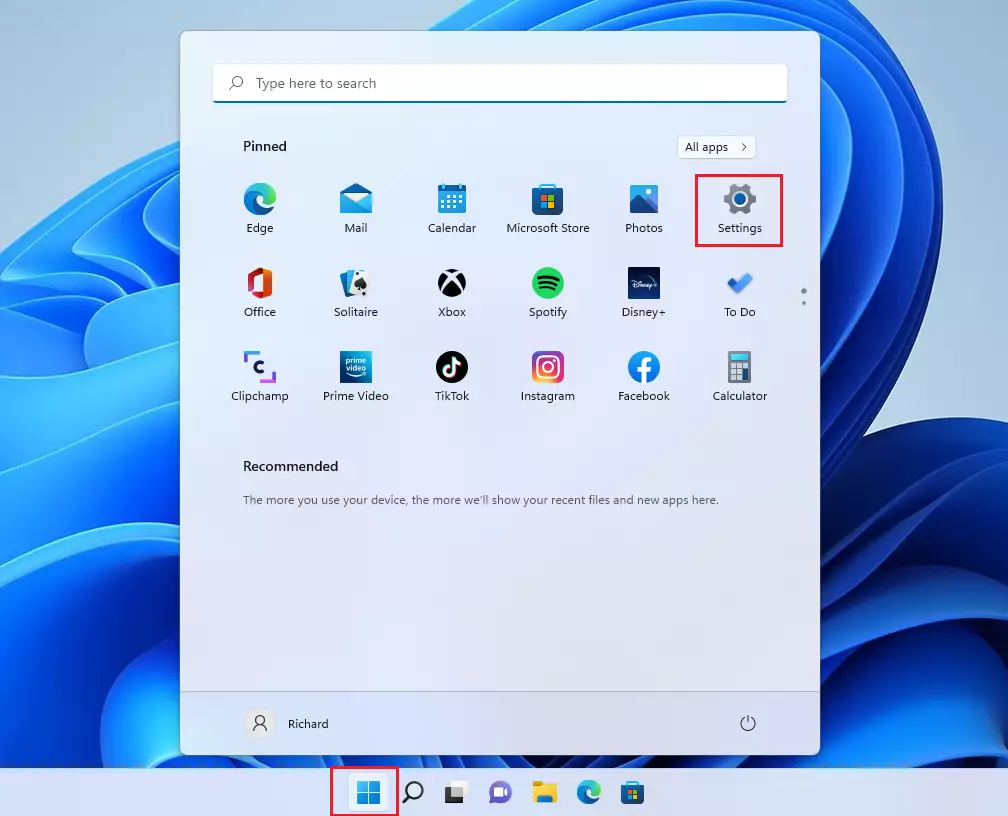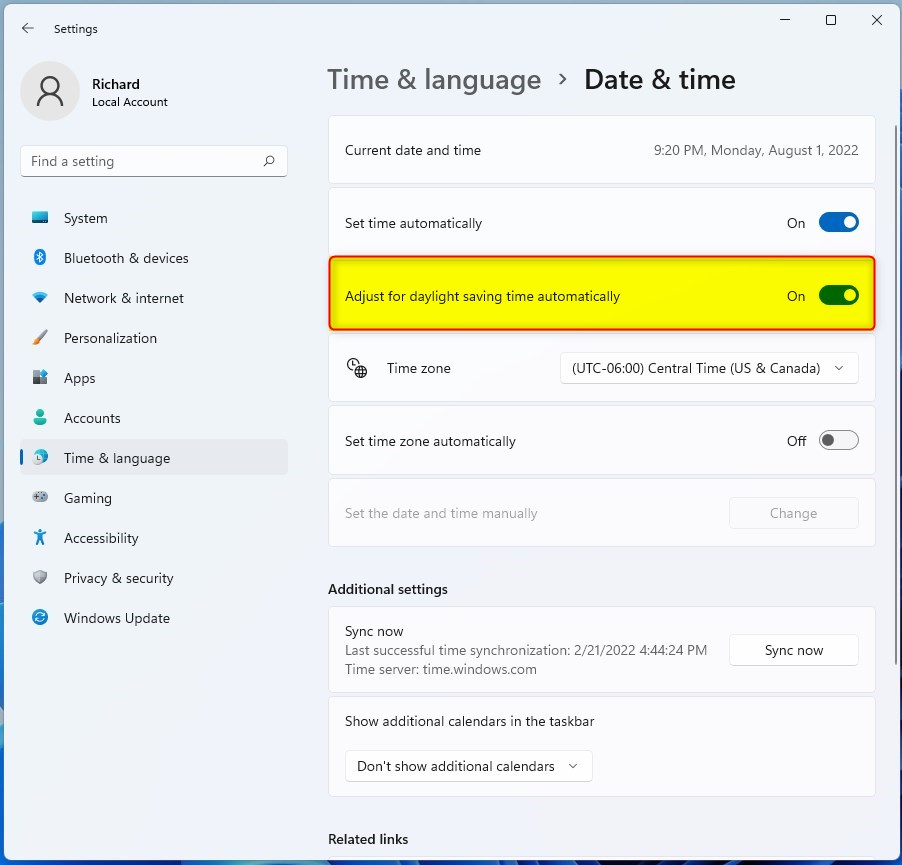This post describes steps to turn On or Off “Adjust for daylight saving time automatically” in Windows 11.
Daylight saving time (DST) is a practice of advancing clocks during warmer months so that darkness falls later. The process is reversed during the fall months.
Windows can automatically manage DST if you allow it to. Many services and applications depend on the Windows operating system for daylight saving time (DST) and time zone (TZ) information.
Your schedules and alarms also depend on your computer’s DST settings; therefore, choosing the correct time zone and updated DST settings is very important.
To ensure that Windows has the latest and most accurate time data, Microsoft continuously monitors DST, and TZ changes that governments worldwide announced.
You can let Windows manage your device’s daylight saving time automatically. For example, allowing Windows to manage your device’s DST settings will manage system date and time, and daylight saving will automatically be changed and updated.
You can also choose not to have Windows managing your device’s DST settings. However, if you do, you must manually update the correct daylight saving time.
How to enable or disable adjust for daylight saving time automatically in Windows 11
As mentioned above, you can automatically turn “Adjust for daylight saving time” on or off in Windows.
You must set it manually if you don’t allow Windows to adjust daylight saving time automatically.
Below is how to enable or disable it.
Windows 11 has a centralized location for the majority of its settings. As a result, everything can be done, from system configurations to creating new users and updating Windows from its System Settings pane.
To get to System Settings, you can use the Windows key + I shortcut or click on Start ==> Settings, as shown in the image below:

Alternatively, you can use the search box on the taskbar and search for Settings. Then select to open it.
Windows Settings pane should look similar to the image below. On the Windows Settings app, click the time & language on the left, then select the Date & time tile on the right pane, as highlighted in the image below.

On the System > Time & language > Date & time settings pane, toggle the switch button to Adjust daylight saving time automatically to On or Off.
The Adjust for daylight saving time automatically setting will be grayed out if the Set time zone is automatically turned on.

Windows will automatically manage the system time zone if the switch is on. If Off, you’ll manually set the time zone for all users.
How to manually set the time zone in Windows 11
If you turn off “Adjust for daylight saving time automatically” in Windows 11, as described above, you will have to set the time for your Windows device manually.
Go to Settings > Time & language > Date &Timee. Then, under Current data andTimee, toggle the button switch to the Off position to allow users to adjust for daylight saving time in Windows 11 manually.

That should do it! You can now close the Windows settings app.
Conclusion:
- Enabling or disabling “Adjust for daylight saving time automatically” in Windows 11 is crucial for ensuring accurate time data and proper management of daylight saving adjustments.
- Allowing Windows to manage daylight saving time settings can simplify the process for users, as it automatically adjusts the system date and time.
- Manually setting the time zone and daylight saving time becomes necessary when disabling automatic adjustment, empowering users to take control of these settings.
- Accessing the settings for “Adjust for daylight saving time automatically” and manual time zone management is conveniently centralized within the Windows 11 Settings app, enhancing user experience and accessibility.

Leave a Reply Cancel reply